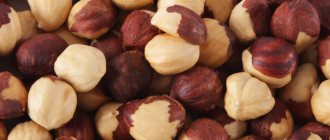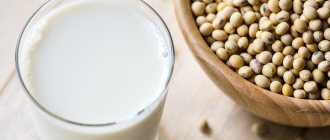Hearing the phrase “The Taste of Paradise”, many of you will freeze in bewilderment, but say the advertising slogan “Bounty - heavenly pleasure”, and everything will fall into place. The iconic chocolate bar with delicate coconut shavings never leaves TV screens, posing against the backdrop of exotic islands and azure ocean waves.
Familiar advertising takes residents of modern Russia back to the 90s, to childhood and youth, when coconut candy was truly synonymous with pleasure, desired and incredibly tasty. But do you know everything about such a familiar delicacy?
Composition and calorie content
Bounty bar composition:
- dried coconut pulp (shavings);
- vanillin;
- glucose syrup;
- wheat flour;
- glycerin and glycerol monostearate (claimed as a moisture regulator and emulsifier, respectively);
- salt;
- sugar;
- premium quality milk chocolate (contains up to 30% cocoa products; sugar, milk powder and dairy products; natural flavoring – vanillin, natural emulsifier – soy lecithin).
The calorie content of the Bounty chocolate bar is 475 kcal per 100 grams of product, of which:
- fats – 25 g;
- proteins – 4.2 g;
- carbohydrates – 58.1 g.
Based on these figures, we can conclude that the majority of calories in a Bounty bar are carbohydrates, the main source of which is sugar.
Important information: if you are watching your body weight, but sometimes allow yourself a chocolate treat, when calculating the BJU of your daily diet (when analyzing the amount of proteins, fats and carbohydrates in your menu), keep in mind that Bounty candy (1 piece) weighs 25.7 grams. Therefore, for one milk chocolate Bounty bar the calorie content will be approximately 118 kcal.
Beneficial features
Chocolate has been used for hundreds of years as a cure for all ailments. The Aztecs were the first to discover that cocoa beans have strong stimulant properties. It was believed to be useful for digestive disorders, fever, and also has an effect on blood purification. It was a beneficial remedy for headaches and was even used to relieve pain during childbirth.
Chocolate was also considered an effective aphrodisiac. Phenylthylamine, present in the chemical composition of chocolate, triggers the production of serotonin and endorphins in the brain. Serotonin counteracts depression and reduces susceptibility to nervous system disorders such as schizophrenia. Endorphins improve your mood and increase feelings of pleasure. Chocolate also contains large amounts of magnesium (especially bitter chocolate). This element not only improves muscle function and promotes calcium absorption, but also, like serotonin, counteracts stress.
The chemical composition of chocolate contains caffeine and theobromine, so it can be addictive. The beneficial effects of the product will only be felt by people who consume it occasionally. Those who eat it very often become resistant to its effects, so not only do they not feel the beneficial effects of magnesium and serotonin, but they may also suffer from migraines and headaches.
Overconsumption of the product can also cause weight gain as a side effect, and people with heart disease and diabetes should avoid sweetened chocolate. It can cause an allergic reaction in the body - cocoa, milk, wheat and nuts contained in it can be allergens. Milk chocolate is also harmful to people who are lactose intolerant.
Benefits and harms
Chocolate contains serotonin, otherwise called the “joy hormone,” and lecithin, which is responsible for mental acuity. This means that high-quality sweets will delight not only your taste buds, but also your body.
What else is “Bounty” useful for:
- contains vitamin C, which strengthens the immune system;
- Vitamins A and E in the composition improve skin condition and fight inflammation;
- calcium and magnesium strengthen bone tissue, and zinc affects the beauty of hair.
Important! Excessive consumption of sugar (and Bounty is high in this product) can harm not only your figure, but also your overall health. You should not eat chocolate after lunch, when the digestive process slows down.
How many calories are in a piece of dark chocolate?
The weight of one chocolate bar can vary from 100 to 120 grams. On average, each row of tiles is divided into four pieces. There are about 20 such pieces in total, so it is not difficult to calculate the weight of one piece and its calorie content. How many calories are in dark chocolate 70? A 100-gram serving of this delicacy will contain about 536 kilocalories. Accordingly, one piece contains approximately 26.8 kilocalories.
On a note! Nutritionists recommend eating no more than 30 grams of chocolate per day. It is advisable to enjoy the taste of this sweetness in the first half of the day.
Chocolate with a higher percentage of cocoa beans is considered even healthier and tastier. It is commonly called bitter. Indeed, the taste is specific and not everyone likes it. How many calories are in 90 dark chocolate? Approximately, a bar of such chocolate weighing 100 g will contain approximately 539 kilocalories.
Manufacturers offer a wide range of sweets. They differ in price category and brand. How many calories are in Babaevsky dark chocolate? The nutritional value of one hundred-gram slab will vary from 530 to 580 kilocalories.
It is worth noting that additives in the form of various types of nuts, caramel, cookies, and any other fillers will increase the calorie content of chocolate.
Range
Beloved by many Russians, Bounty is available in two forms: with milk or dark chocolate. For chocolate gourmets, the product line offers a special flavor - with mango and pineapple.
In modern Russian stores you can find three types of coconut delicacy that promise heavenly pleasure:
- Bounty classic (double chocolate bar) - package weight 55 g.
- Three bars in one package (Bounty Trio) - product weight: 82.5 g.
- Festive Bounty Snack size (seven bars for a friendly company) - total product weight: 192.5 g.
“Bounty” is chocolate filled with airy coconut flakes, the taste of which is familiar to everyone since childhood. The picturesque wrapper of the delicacy transports you to a paradise island, where instead of sand, coconut pulp is scattered, which is washed by waves of premium milk chocolate.
The quality of Bounty chocolate has stood the test of time, and its beneficial properties (when consumed in moderation) outweigh the disadvantages. Therefore, if you want to find yourself on a paradise island in the midst of a cold winter, feel free to buy the treasured package and enjoy the aroma of adventure!
Briefly about the chemical composition of different types of chocolate
Natural chocolate (bitter and dark) is rich in healthy substances. White and milk - due to the addition of condensed milk, they contain protein, which is a factor in cell growth and regeneration of the body, as well as calcium, important for muscle function and the proper functioning of the nervous system, enzymes and blood clotting.
Below is a table comparing the chemical composition of different types of chocolate. Values per 100 g of product.
| type of product | Bitter | Lactic | White |
| Calories (energy value) | 599 kcal / 2508 kJ | 535 kcal / 2240 kJ | 539 kcal / 2257 kJ |
| Protein | 7.79 g | 7.65 g | 5.87 g |
| Total fat | 42.63 g | 29.66 g | 32.09 g |
| Saturated fatty acids | 24.489 g | 18.50 g | 19.412 g |
| Monounsaturated fatty acids | 12.781 g | 7.186 g | 9.097 g |
| Polyunsaturated fatty acids | 1.257 g | 1.376 g | 1.013 g |
| Omega-3 fatty acids | 0.034 g | 0.122 g | 0.100 g |
| Omega-6 fatty acids | 1.212 g | 1.254 g | 0.913 g |
| Carbohydrates | 45.90 g | 59.40 g | 59.24 g |
| Dietary fiber | 10.9 g | 3.4 g | 0.2 g |
| Vitamin A | 39 IU | 195 IU | 30 IU |
| Vitamin D | 0 mcg | 0 mcg | 0 mcg |
| Vitamin E | 0.59 mg | 0.51 mg | 0.96 mg |
| Vitamin K1 | 7.3 mcg | 5.7 mcg | 9.1 mcg |
| Vitamin C | ~ | 0 mg | 0.5 mg |
| Vitamin B1 | 0.034 mg | 0.112 mg | 0.063 mg |
| Vitamin B2 | 0.078 mg | 0.298 mg | 0.282 mg |
| Vitamin B3 (PP) | 1.054 mg | 0.386 mg | 0.745 mg |
| Vitamin B6 | 0.038 mg | 0.036 mg | 0.056 mg |
| Vitamin B9 (folic acid) | ~ | 12 mcg | 7 mcg |
| Vitamin B12 | 0.28 mcg | 0.75 mcg | 0.56 mcg |
| Vitamin B5 (pantothenic acid) | 0.418 mg | 0.472 mg | 0.608 mg |
| Calcium | 73 mg | 189 mg | 199 mg |
| Iron | 11.9 mg | 2.35 mg | 0.24 mg |
| Magnesium | 228 mg | 63 mg | 12 mg |
| Phosphorus | 308 mg | 208 mg | 176 mg |
| Potassium | 715 mg | 372 mg | 286 mg |
| Sodium | 20 mg | 79 mg | 90 mg |
| Zinc | 3.31 mg | 2.30 mg | 0.74 mg |
| Copper | 1.77 mg | 0.49 mg | 0.06 mg |
| Manganese | 1.95 mg | 0.47 mg | 0.01 mg |
| Selenium | 6.8 mcg | 4.5 mcg | 4.5 mcg |
| Fluorine | ~ | 5.0 mcg | ~ |
| Cholesterol | 3 mg | 23 mg | 21 mg |
| Phytosterols | 129 mg | 53 mg | ~ |
Story
You may be interested in: What is the difference between dark chocolate and dark chocolate: composition, similarities and differences, beneficial properties
Chocolate comes from South America. This is where cocoa grows, also called the cocoa tree (Latin: Theobroma cacao), from which cocoa powder and butter are obtained. They are the main ingredients of chocolate. Around 2000 BC, a powder made from the beans found in the cocoa fruit was used by the ancient Olmecs living in what is now Mexico. The warm and humid climate prevailing in this area was ideal for growing the cocoa tree. However, it will always be a secret how they discovered the benefits of small grains and learned to use them.
The real cult of chocolate was developed by the Mayans in the 3rd century AD. They roasted and ground cocoa beans. The resulting powder was mixed with water, corn flour, honey and chili. Thus, a bitter and highly spicy drink was created, which was originally intended mainly for kings, aristocrats and participants in religious ceremonies. Chocolate was a highly revered product and served extremely important functions during the celebration of sacred rituals.
The Aztecs adopted the custom of eating chocolate from the Mayans. They have introduced many innovations in this field. The Aztecs preferred a cool drink, enriched with the aromas of paprika, vanilla or dried flower petals, which gave it its color: red, white or black. Cocoa beans were so valuable that they served as currency.
You may be interested in: Classification of chocolate by composition and production technology. Chocolate and chocolate products
The first European to try cocoa was Christopher Columbus. The fruits he brought to Europe did not immediately arouse interest. The drink made from them first received recognition in the Spanish court. In other countries, attempts were made to brew a similar mixture from the increasingly widespread cocoa beans. However, it was too bitter. For a hundred years, the Spaniards hid a secret method of preparing it with vanilla and sugar. It was only in the 17th century that the hot drink was introduced to other countries.
It was used in aristocratic homes for many years. The breakthrough came in the 17th century, when chocolates appeared in the French court. In the 18th century, the chocolate industry developed in many European countries. Switzerland stood out in particular, and to this day is one of the largest chocolate producers in the world.
In 1879, Swiss confectioner Rudolf Lindt invented a device that mixed chocolate ingredients so that the tart aroma disappeared and the mass acquired a velvety consistency that could melt in the mouth. In Switzerland, Henry Nestlé contributed to the introduction of milk chocolate by adding condensed milk to bitter cocoa mass. With this invention, Daniel Peter created the milk chocolate that is known and widely loved today. Raisins and nuts were added by the Italians as a complement to the sweet treat.
What does the white coating on chocolate mean?
A white or gray coating on chocolate does not mean it has gone bad. These are microscopic particles of fat found in chocolate (not mold, as some people believe). It occurs when sweets are stored at different temperatures, such as when chocolate is dissolved and then placed in the refrigerator. This is not harmful to health, it only spoils the aesthetic appearance of the product.
Now you know how the chemical composition and nutritional value of different types of chocolate differ.
Source









